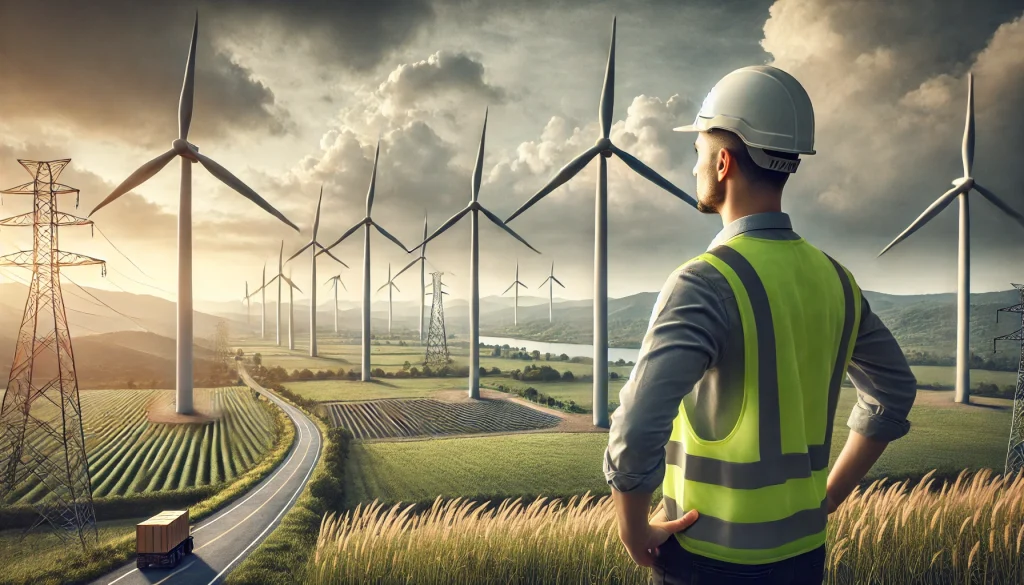Renewable energy in the US is transforming the country’s energy landscape, driven by technological advancements and strong governmental support. Over the past decade, the shift towards sustainable energy sources has accelerated, reducing reliance on fossil fuels and decreasing carbon emissions. This transition is not just an environmental necessity but also a major economic opportunity, making renewable energy a highly attractive investment sector.
The demand for cleaner energy is growing as businesses and consumers prioritize sustainability. Government incentives, lower technology costs, and increased energy efficiency are fueling this shift. As a result, renewable energy in the US is becoming a dominant force in the country’s long-term energy strategy, reinforcing its role as a key pillar of economic and environmental progress.
Opportunities in the renewable energy market

The US renewable energy market is full of opportunities, particularly in solar and wind power. Solar energy, once considered expensive, has become highly cost-effective due to declining panel prices and improved efficiency. Residential and commercial installations are increasing, while utility-scale solar farms are expanding to meet rising demand. These trends highlight solar power as a strong investment option. Wind energy has also seen remarkable growth, particularly in states like Texas and Iowa, where vast open spaces support large wind farms.
Offshore wind projects are gaining momentum along the East Coast, further diversifying the renewable energy landscape. According to the U.S. Energy Information Administration, wind and solar energy are projected to be the fastest-growing sources of electricity generation in the country. With steady technological improvements and increased storage capacity, wind power continues to be a leading renewable energy source in the US.
Government incentives and policies
Government policies have been essential in driving renewable energy expansion. Federal programs such as the Investment Tax Credit (ITC) and the Production Tax Credit (PTC) provide financial benefits to businesses and homeowners adopting renewable energy solutions. These incentives significantly lower installation costs and encourage the transition toward cleaner energy sources.
Additionally, many states have their own incentive programs. For example, California offers rebates for solar panel installations, while Texas provides grants for wind energy development. Such initiatives make renewable energy projects more attractive and accessible, reinforcing the sector’s long-term viability and growth potential.
Financial and Environmental Benefits of Investing
Investing in renewable energy in the US presents both financial and environmental advantages. One of the main financial benefits is the potential for high returns. As technology costs decrease, the profitability of solar and wind projects increases. Many investors see stable, long-term gains in the sector, making it a strong asset for portfolio diversification.
On the environmental side, renewable energy investments contribute significantly to reducing greenhouse gas emissions. The US has set ambitious climate targets, and increased adoption of clean energy plays a crucial role in meeting these goals. Businesses that invest in renewables enhance their corporate social responsibility (CSR) profiles, attracting environmentally conscious consumers and stakeholders.
Challenges in Renewable Energy Investments
Despite its many advantages, renewable energy investments come with certain challenges. One of the main concerns is the high initial cost of infrastructure, particularly for large-scale projects. While incentives help offset expenses, the upfront capital required can still be a barrier for some investors.
Another issue is the intermittent nature of renewable energy sources. Solar and wind power generation depends on weather conditions, requiring advancements in energy storage solutions to ensure a stable supply. Fortunately, battery technology is improving, and innovations in grid management are helping address these challenges.
The Future of Renewable Energy in the US
The future of renewable energy in the US looks promising, with strong growth projections for the next decade. Improvements in battery storage, smart grid technology, and energy efficiency are expected to further boost the industry. As costs continue to decline and adoption increases, renewable energy will likely dominate the country’s energy market.
Climate policies and corporate sustainability initiatives will further drive demand for clean energy solutions. Companies across industries are committing to net-zero emissions goals, increasing investments in solar, wind, and other renewable sources. With ongoing innovation and supportive regulations, renewable energy in the US is set to become the backbone of the nation’s energy infrastructure.
Conclusion: A Strong Investment Opportunity
Investing in renewable energy in the US is more than just a trend—it is a strategic decision for financial growth and environmental impact. With strong government backing, increasing demand, and continuous technological advancements, the sector presents numerous opportunities for investors.
Despite challenges such as initial costs and storage limitations, the long-term benefits outweigh the risks. As the country moves toward a cleaner energy future, those who invest in renewable energy today will likely see significant returns and contribute to a more sustainable world.
